Leaderboard
-
in Models
- All areas
- Videos
- Video Comments
- Video Reviews
- Marker
- Books
- Bookshelves
- Events
- Event Comments
- Event Reviews
- Images
- Image Comments
- Albums
- Album Comments
- Blog Entries
- Blog Comments
- Topics
- Posts
- Articles
- Article Comments
- Wheels
- Wheel Comments
- Colors
- Steering wheels
- Steering wheel Comments
- Years
- Year Comments
- Models
- Model Comments
- Vehicles
- Vehicle Comments
- Vendors
- Vendor Reviews
- Books
- Book Reviews
- Articles
- Article Comments
- Status Updates
- Status Replies
-
All time
-
All time
April 24 2013 - May 18 2024
-
Year
May 18 2023 - May 18 2024
-
Month
April 18 2024 - May 18 2024
-
Week
May 11 2024 - May 18 2024
-
Today
May 18 2024
- Custom Date
-
All time
Popular Content
Showing content with the highest reputation since 04/24/2013 in Models
-
3 points
-
3 points
-
3 points
-
BMW 1800TiSA is rightfully considered BMW's first ///M car, a homologation special that won big-time endurance and other races across Europe and in the United States. BMW 2000ti in the hands of Hubert Hahne was the first production sedan to break the 10-minute barrier on the Nurburgring. NKs battled it out with pony cars at U.S.-based Trans Am races, and with Alfas, Cortinas, Saabs, Volvos and even Porsche 911s in Europe and the US. In December of 1964, BMW filed homologation papers with FIA for the 1800TiSA and began building the factory race cars. The "Turismo Internationale SonderAusfuhrung” was sold mainly to competition drivers. BMW planned to build 500 TiSAs but only produced 200, according to official records. In the TiSA, The M10 got another compression bump, to 10.5:1, the highest compression ratio of all production M10 engines, a 300° cam with stiffer valve springs for the street and a 324° optional race cam. Top that off with a pair of Weber 45 DCOEs, the only BMW to come from the factory equipped with Webers. The package was rated at 130 bhp but was capable of 165 bhp in race tune with the race camshaft.. This power was fed through a ZF five-speed "longtail" gearbox with “Porsche baulk synchromesh” on all forward gears. A 75% limited-slip differential was optional. The front brakes were larger than the standard 1800TI, with larger wheel cylinders in the 250mm rear drums to match. The TiSAs also got Koni dampers, firmer springs, and larger anti-sway bars, 19mm and 17 mm front and rear. A wood-rimmed Walsall steering wheel controlled the quick ratio steering box. To contain the driver and front passenger, BMW used Restall racing bucket seats. The cars could do an honest top speed of 110-plus mph. The factory manual includes this preface: “Dear BMW Owner: In line with our tradition of building motor-cars with outstanding performance and characteristics, we have now developed the BMW 1800 Ti Special Version I. “In selecting this model, you have demonstrated that — for you — a motor-car is far more than a utilitarian “means of transportation”. You are now well equipped to enjoy all the pleasures of driving and for any motorsport competition held under fair conditions. “In conclusion, we wish you unlimited luck and success!” Factory information for TiSA owners includes fascinating recommendations for carburetor jetting when running without air filters, and for valve clearances just for racing. “Castrol racing oil” is recommended for competition, but standard HD motor oil for rally and road applications. The engine’s redline was 6,500, but BMW noted that “it is permissible to reach 7,000 rpm for a few seconds, e.g., when overtaking.” BMW offered to send owners drawings to enable the owners to build special performance exhaust components to be used only on “enclosed tracks.” There were factory suspension kits to lower the cars, too. In spite of all this encouragement to race, BMW also warned, “Our liability and responsibility within the scope of the warranty become void if the car is entered in competitions.” The interior sported UK-made Restall high-bolstered racing buckets with two-tone upholstery, a wood-rimmed steering wheel, and a tachometer staring the driver in the face from its perch atop the steering column. The TiSA rode on wide-for-the-day 14X5-inch wheels with Dunlop tires. The bodies were stamped of thinner steel then the other NK cars, making the TiSA the lightest NK of them all, at 1050 kg. Some BMW histories contend the 1800TiSA was offered in one color, German Racing Silver. But owners and sales documents state otherwise. TiSAs were available in Bristol, Chamonix, and Polaris Silver Metallic. Cost, 13,500 DM, or roughly $3,375 in 1966 dollars. A window sticker from a TiSA sold in the U.S. by a dealership in South Carolina, showed a total price of $4,631, including tax. For the sake of comparison, the base price on a Corvette was $4,295.2 points
-
The Neue Klasse BMW 1500 made its official debut at the 1961 Frankfurt Auto Show, and it hit showrooms in October, 1962. U.S. list price, $3,350. Curb weight, 2,390 pounds. Engineer and ex-race driver Alex von Falkenhausen was put in charge of engine development. He had to overcome corporate sentiment for an anemic 1.3-liter engine, and he had to fight hard for the "stretchable" 1.5-liter design based on a sturdy iron (not aluminum) engine block. The M10 featured a slightly over-square 82 mm X 71 mm bore and stroke, a single Solex carburetor and an 8.8:1 compression ratio. BMW reported 80 peak horsepower at 5,700 rpms and peak torque of 118Nm at 3,000. In its 1963 road test, Road & Track magazine clocked the 1500 running 0-60 in 15 seconds and knocking down a standing quarter mile in 19.6 seconds at 68.5 mph. Road & Track posted 90 bhp for the 1500, with top speed of 93 to 95 mph, hinting that BMW had underreported the engine's power. The four-speed gearbox featured synchros for all forward gears, "Porsche-type," as R&T put it. The interior was spartan by modern standards, but allowed for seatbelts for all passengers. The dash included a speedometer/odometer and a combination instrument with fuel level and water temperature gauges and warning indicators for oil pressure, battery charging, and high beams. It had a 6-volt electrical system. Wilhelm Hofmeister led the design team. The BMW design signature, the "Hofmeister kink," made its first appearance on the C pillar of the 1500. Eventually, another BMW interior element made its first appearance on the Neue Klasse, the hooded pod on the dashboard for instrumentation. The steel monocoque chassis had a wheelbase of 2,550 mm, overall length of 4,500 mm, width of 1,710 mm, and height of 1450 mm. Curb weight was 1060 kg. While curb weight would vary somewhat by model, the basic dimensions were unchanged throughout the production run. Buyers could choose from six colors, including Florida (066), Manila (004), Turf (073), Chamonix (085), Guayana (584), and Macao (690). A BMW factory list of accompanying interior colors for 1962/63 has not been cataloged at BMW Archiv. According to BMW historian Andreas Harz, no information is officially available through BMW Archiv on NK interior color palettes prior to the 1969 model year. BMW sold more 1500s in two years than a decade's worth of Baroque Angels and Isettas combined. The company literally could not meet demand for its new star. So the elegant but dated sedans and the bubble cars were retired and production line capacity dedicated to the Neue Klasse.
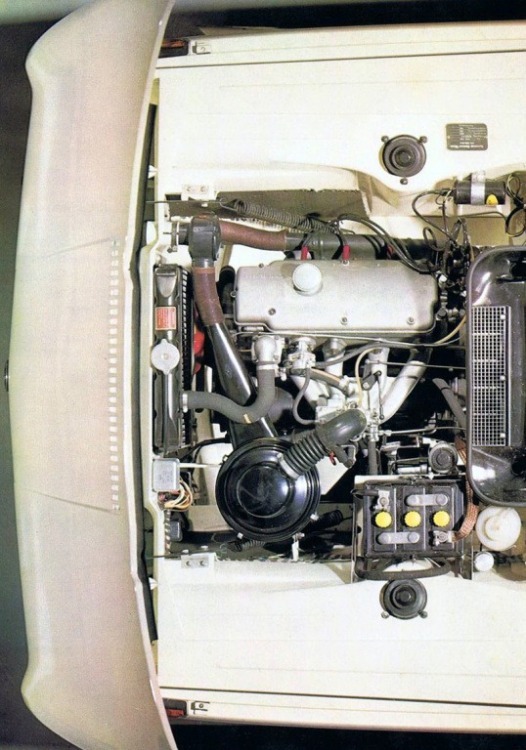
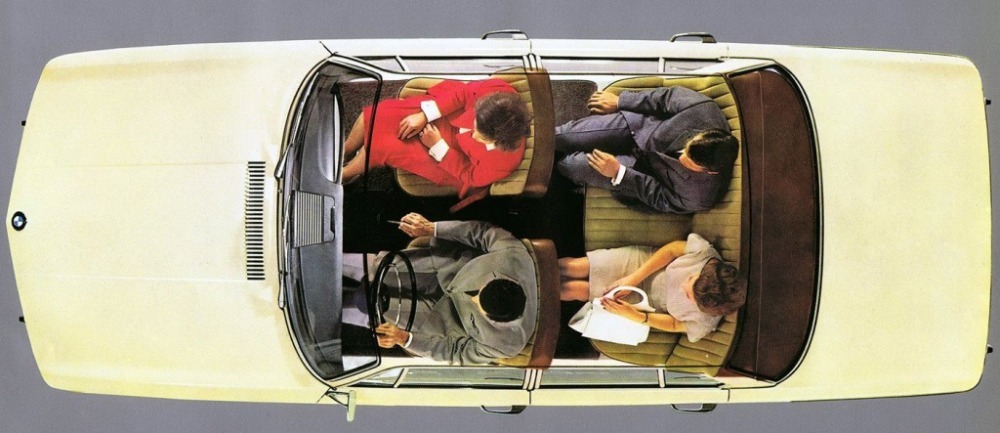

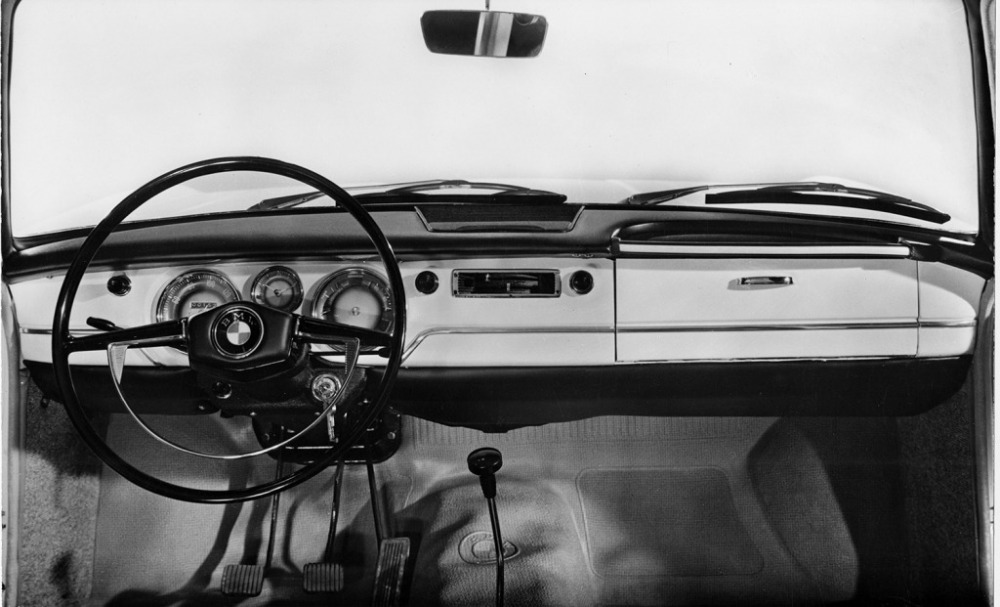

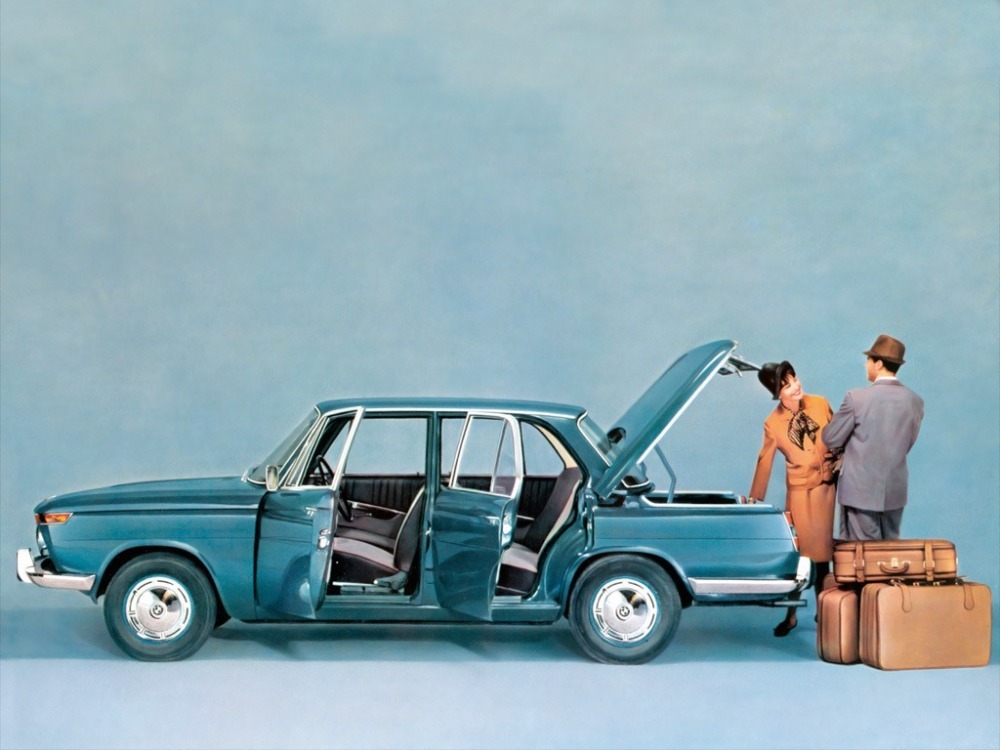
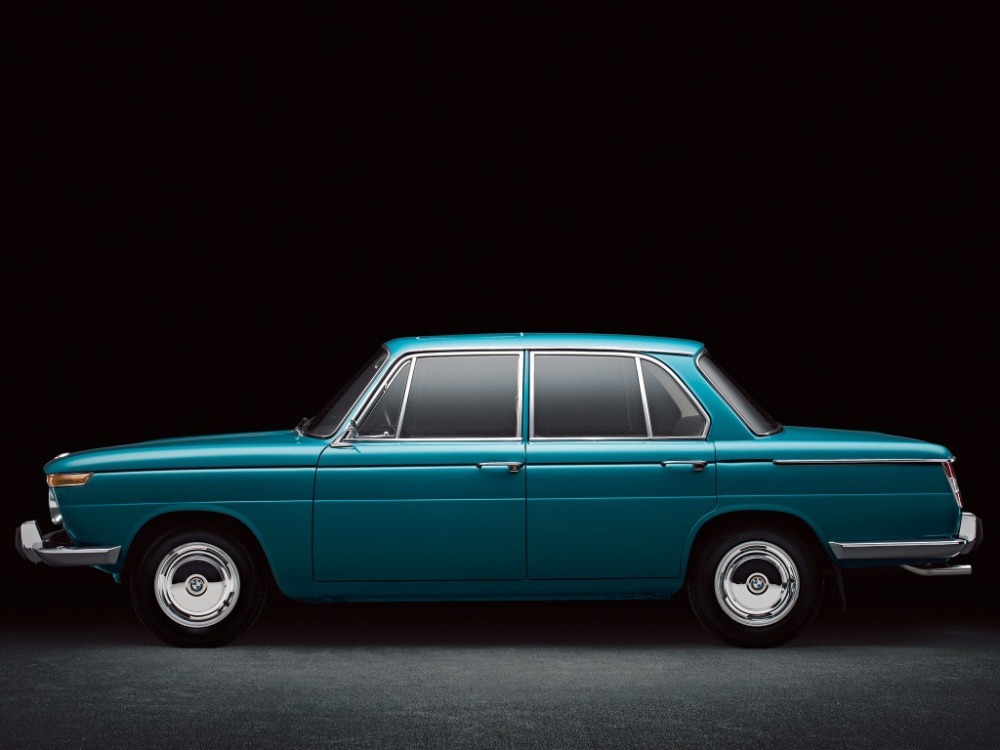

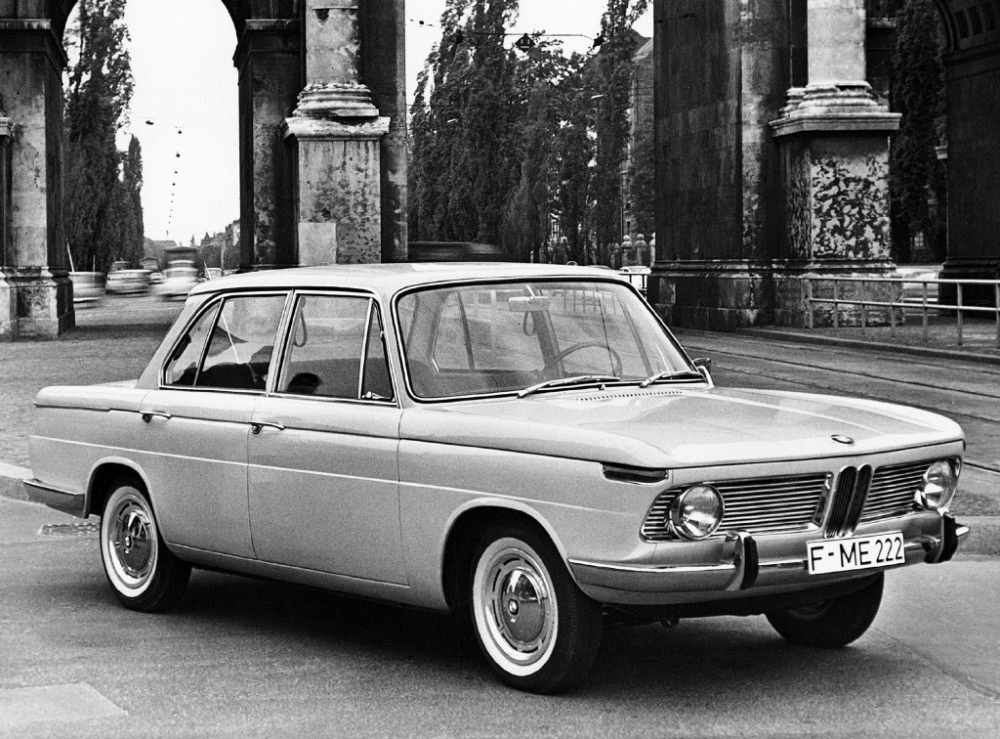
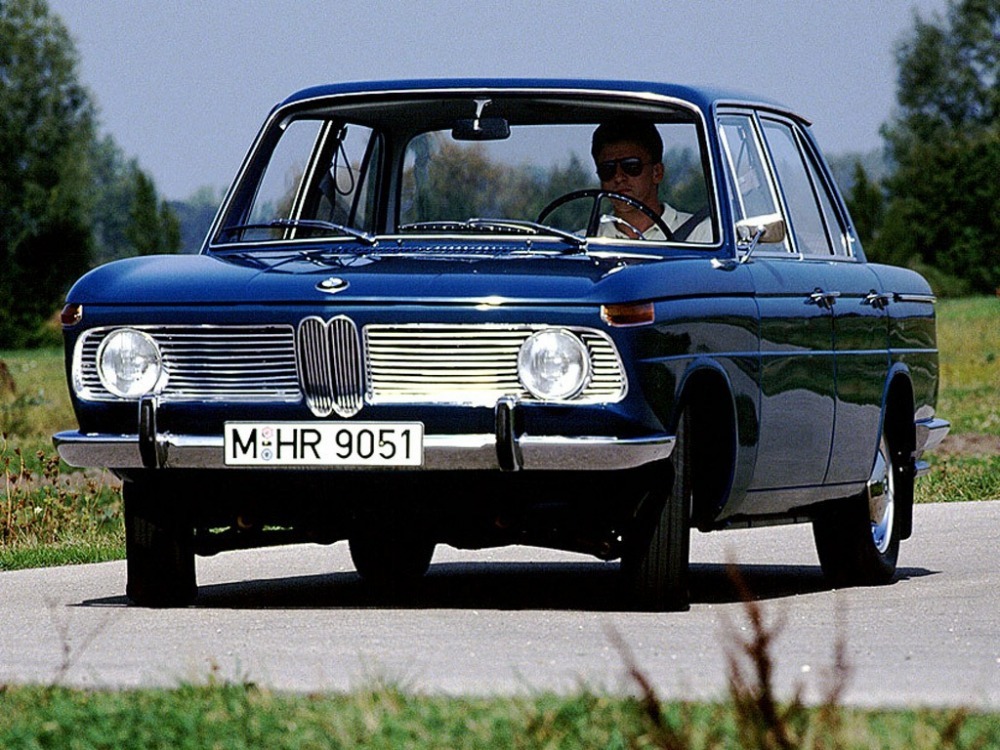
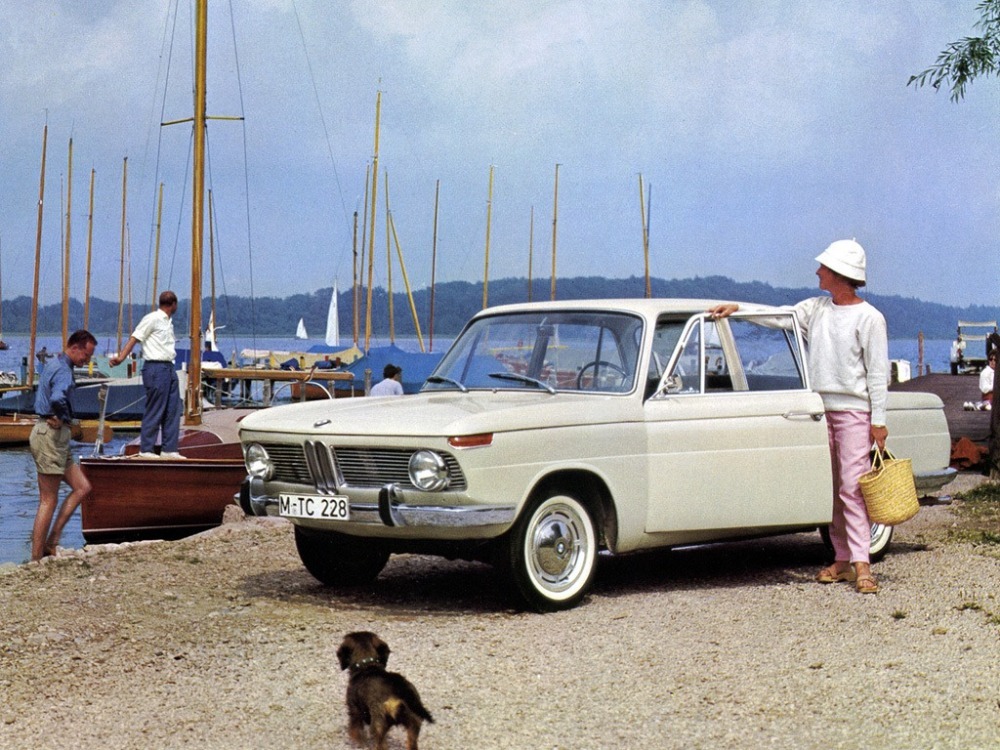
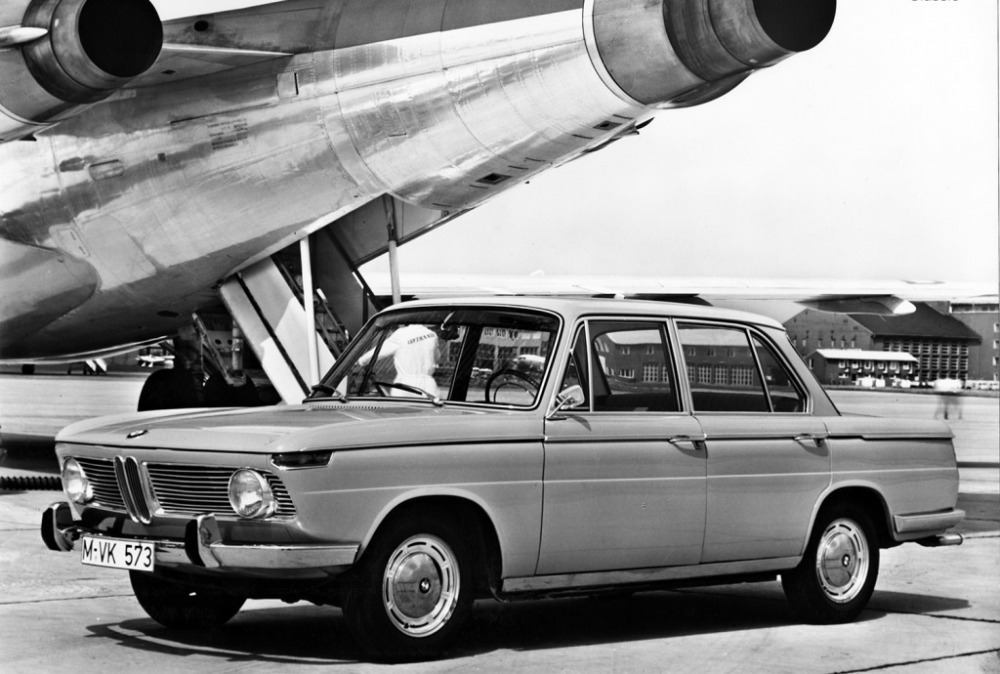
.jpg.4389e62f72094e41442b039d9aeb5221.jpg)
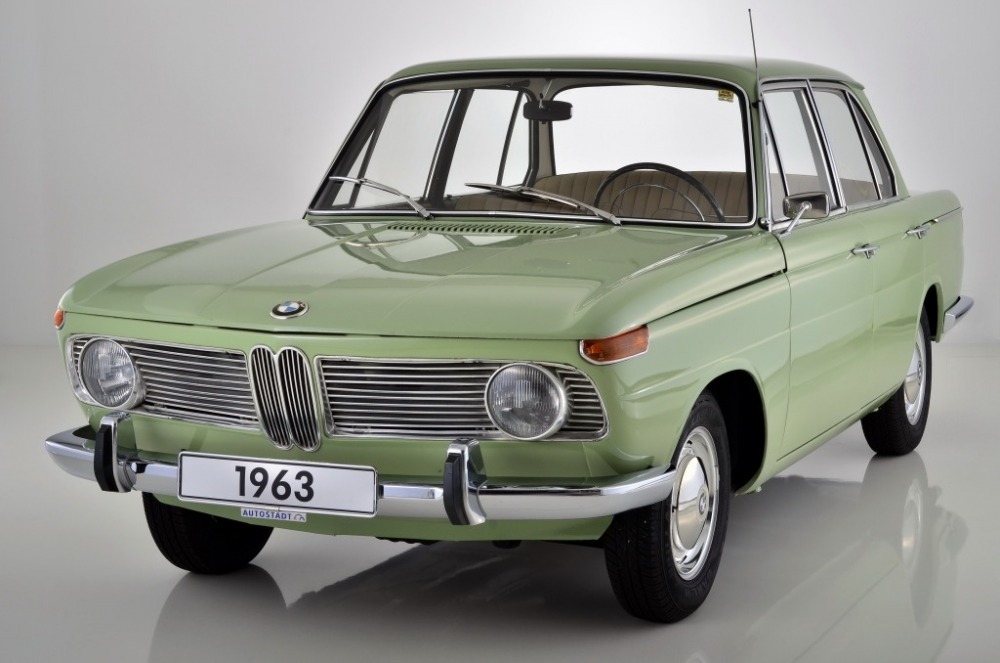
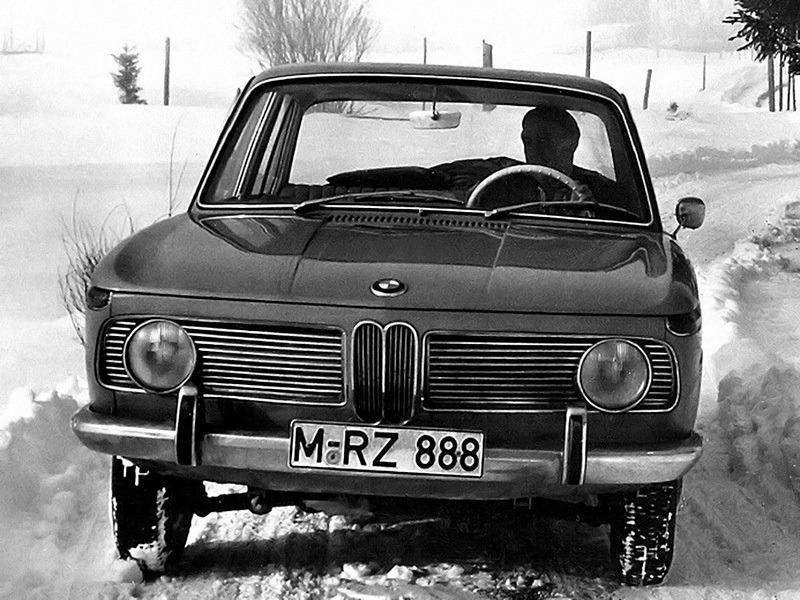
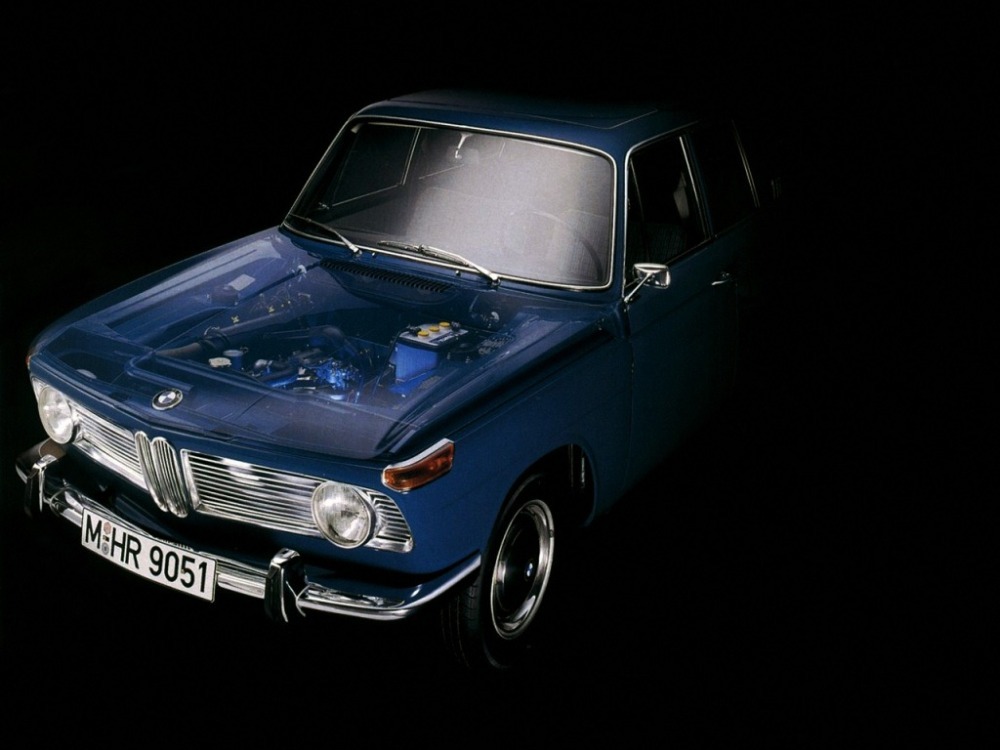
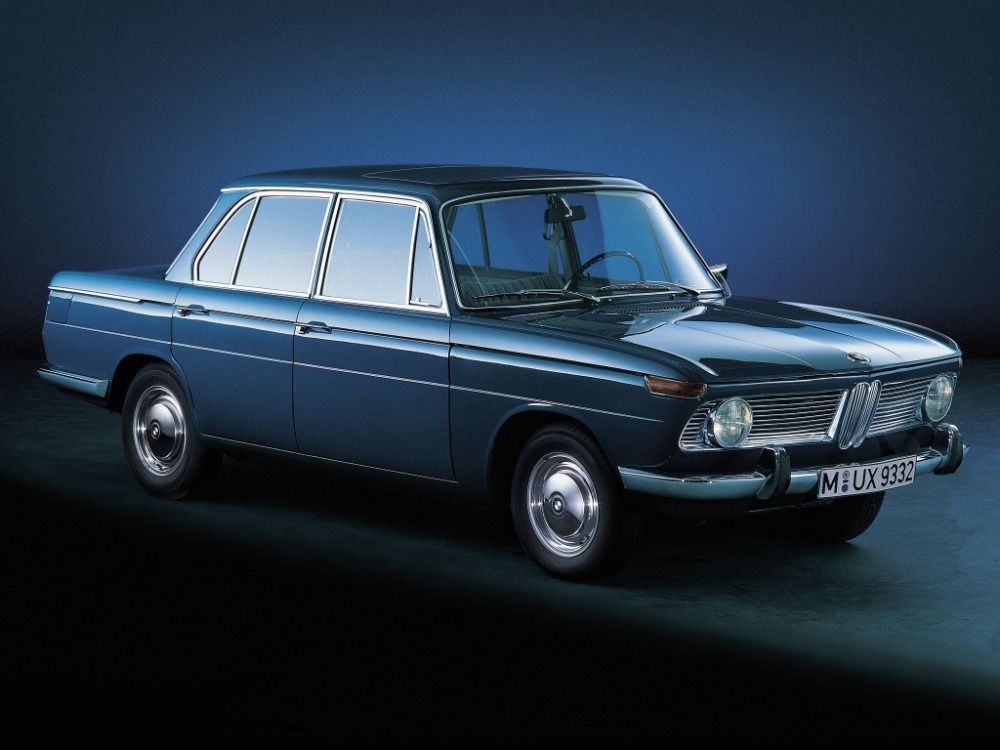

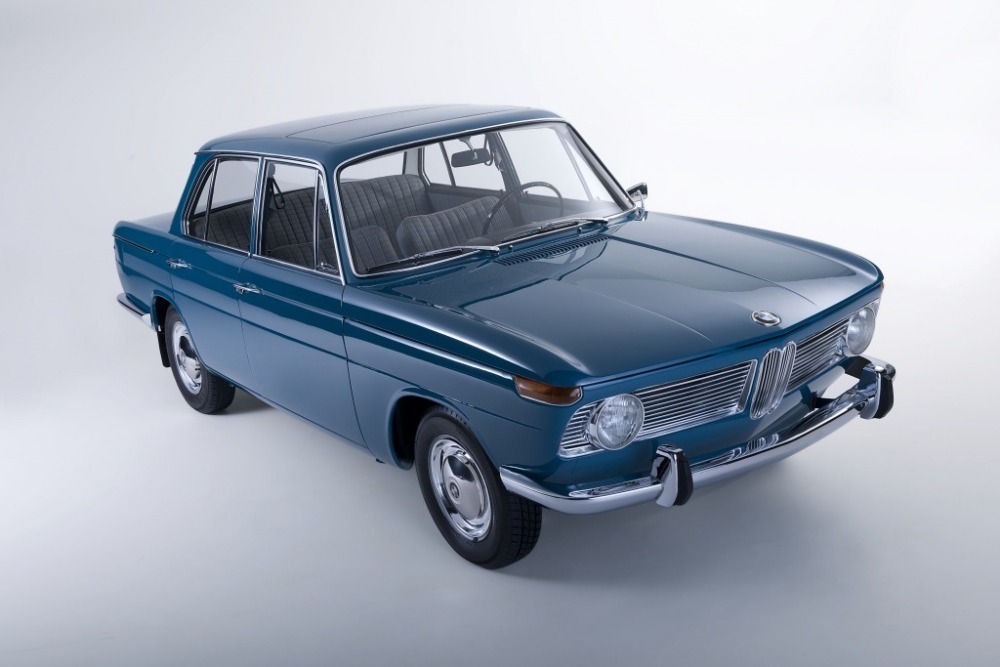
.jpeg.44cdc0f0b4a2d22755e8420d281ca5b4.jpeg) 2 points
2 points -
BMW 1800ti was the first in what would become a long, storied line of BMW special performance derivatives. It featured twin Solex carburetors and a 9.5:1 compression ratio, making 110 bhp. The suspension was uprated with stiffer shocks and springs for more cornering grip. Almost immediately, the 1800ti began racking up racing victories in class against Alfa, Lotus-Cortina, Mini Cooper, and more, competing in road races, hill climbs, and rallies. BMW 1800ti proved to be so dependable on the track that memories of the 1500’s troubles all but disappeared. Drivers of note include Herbert Hahne, Walter Schneider, and Anton Fischaber. American driver and BMW tuner Ray Korman raced an 1800ti in Asia. Marianne “Pinkie” Rollo, Jack Ryan, Lin Coleman, Jerry Titus, and Carl Fredericks campaigned 1800s in US. The first big win came at the ETCC six-hour race at the Nurburgring, where Hahne and Fischaber's 1800ti, bearing No. 14, scored a convincing class win and finished seventh overall. Hahne and Schneider in the same TiSA qualified pole position at the ETCC six-hour race at Brands Hatch. A clutch failure forced a DNF. In all, it was a fantastic inaugural season for BMW's new star, with Hahne eventually winning the German national sedan racing title. In the U.S., BMW 1800ti driven by Ryan and Coleman finished ninth overall and sixth in class at the first-ever Trans-Am race, the Four-Hour Governor's Cup Race for Sedans. The class winner was Jochen Rindt in an Alfa-Romeo 1600 GTA. Rollo finished seventh in her 1800ti at the VIR 400 on July 31, 1966, and later teamed up with Denise McCluggage in a Ferrari 275 GTS to finish second at the 1967 Sebring 12-hour enduro. Drivers could hotrod their BMW 1800ti with Weber conversion kits, trick cylinder heads, and other go-fast goodies from Alpina. Many of these modifications would soon appear as standard features on the hottest NK yet, the 1800TiSA.






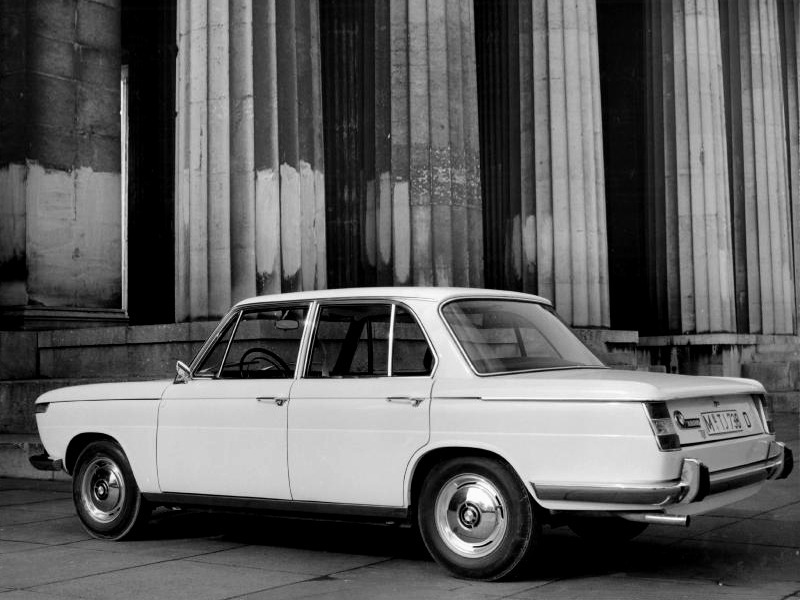

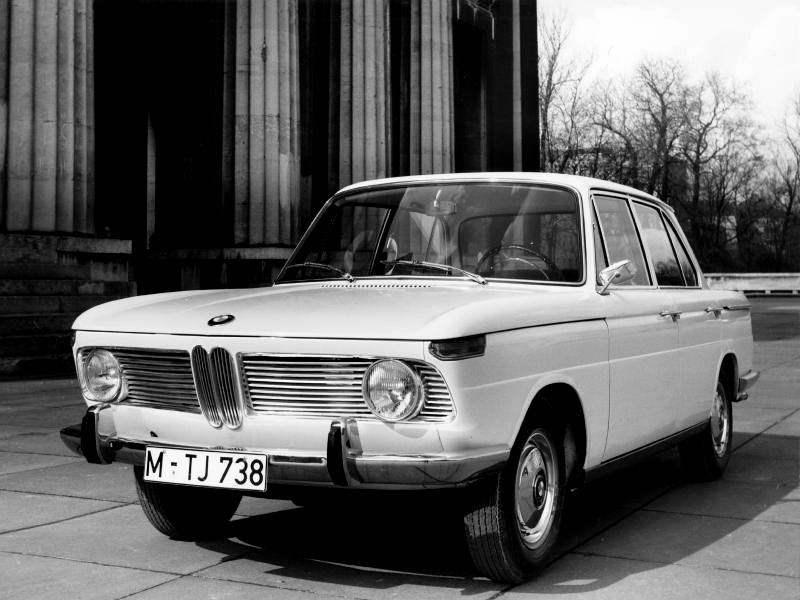

 2 points
2 points -
2 points
-
Flush with BMW 1500 success and sales receipts, BMW almost immediately began turning up the wick on the Neue Klasse. The 1500 cc engine would eventually be retired in favor of a 1600 for the base NKs. BMW built 29,362 1600s before ending the model after 1966. But the big news was 1963's BMW 1800. The only visual changes to mark the 1800s were chrome rocker trim and the updated badges. The most significant changes were under the sheet metal. Key numbers: 84 mm X 80 mm. That was the increased bore and stroke of the 1800's M10. The slightly over-square design would become a BMW staple. Factory-rated 90 bhp pushed the car to a top speed of 100 mph. The cost was 9,985 DM. BMW 1800 got servo assist on the braking system to help deal with the added power. BMW offered as an option a ZF three-speed automatic transmission. BMW built 134,814 1800s from 1963 to 1966. Next came the factory hotrod 1800ti, first appearing in January of 1964 with a premium price tag of 10,980 DM. BMW sold 21,116 1800tis from 1964 to 1967, and one 1800ti was built in 1968.
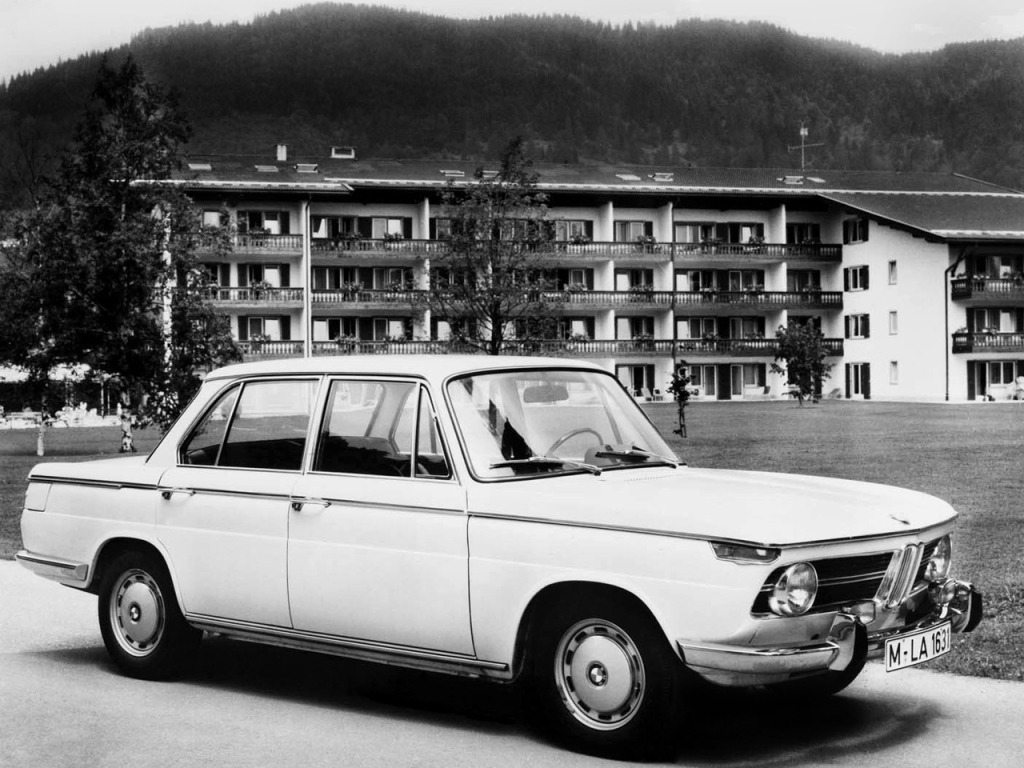
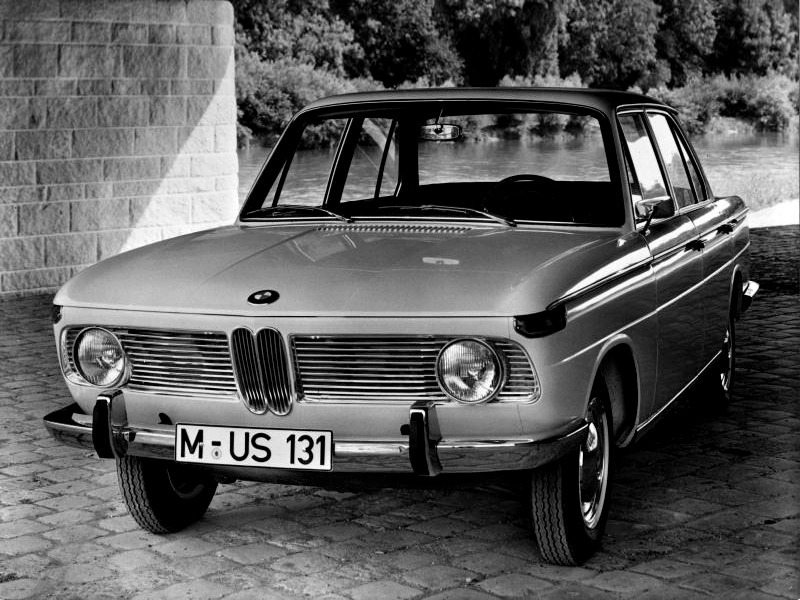
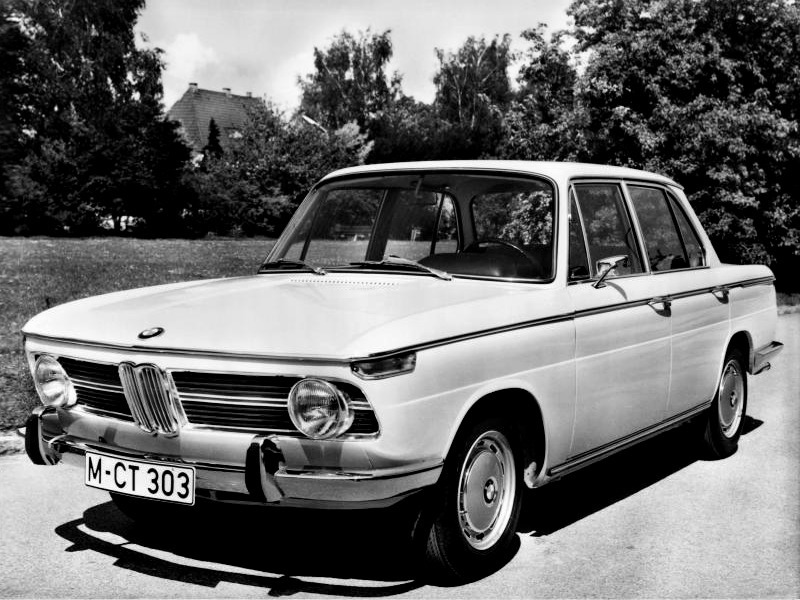
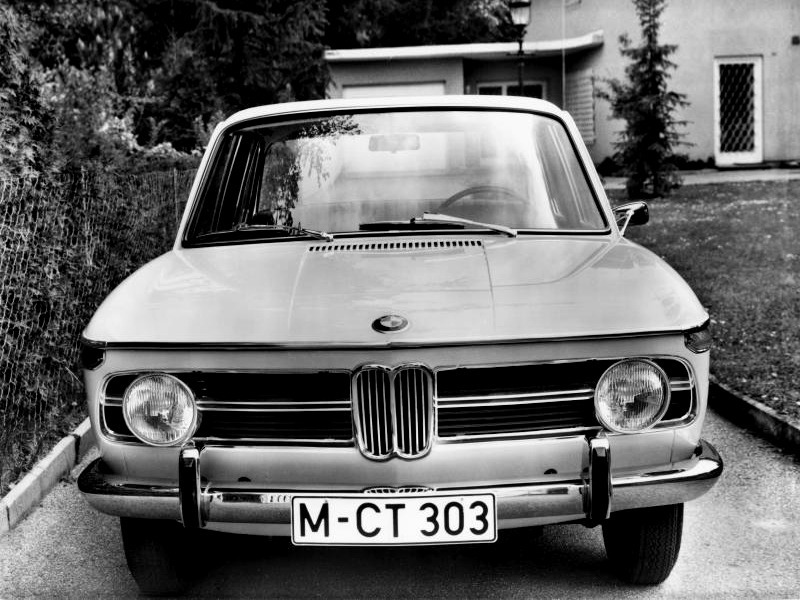
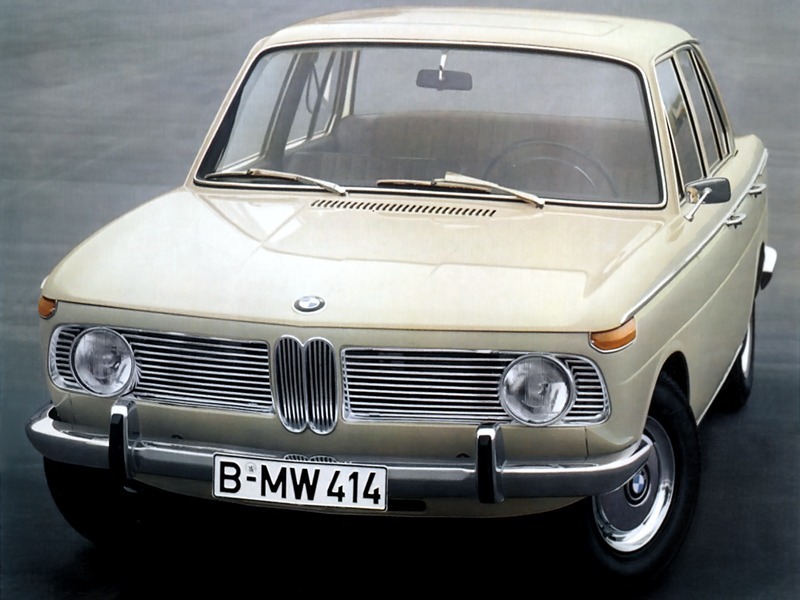
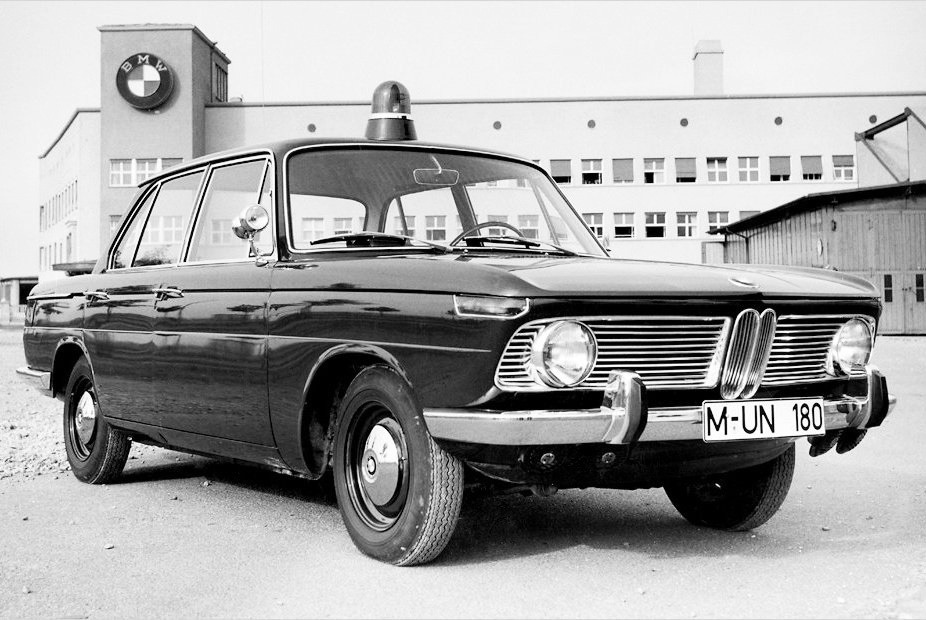
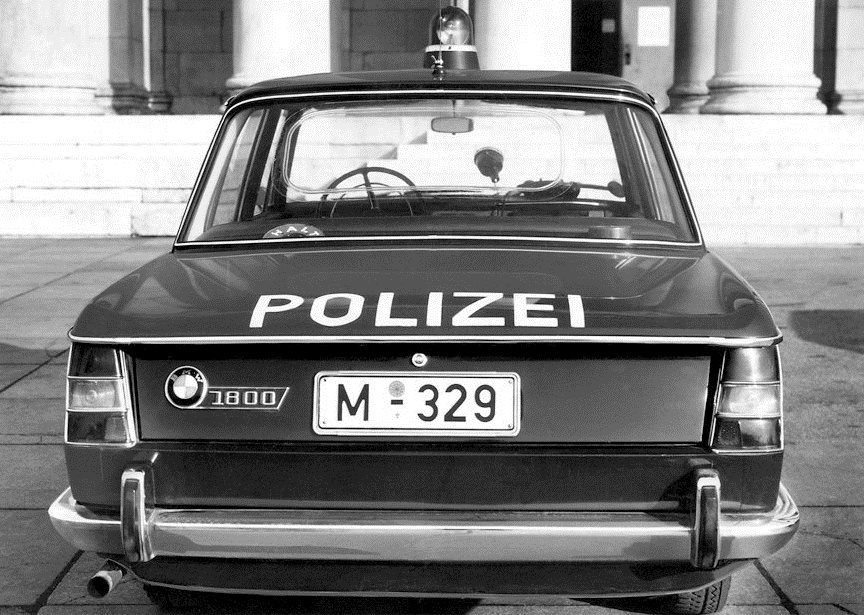
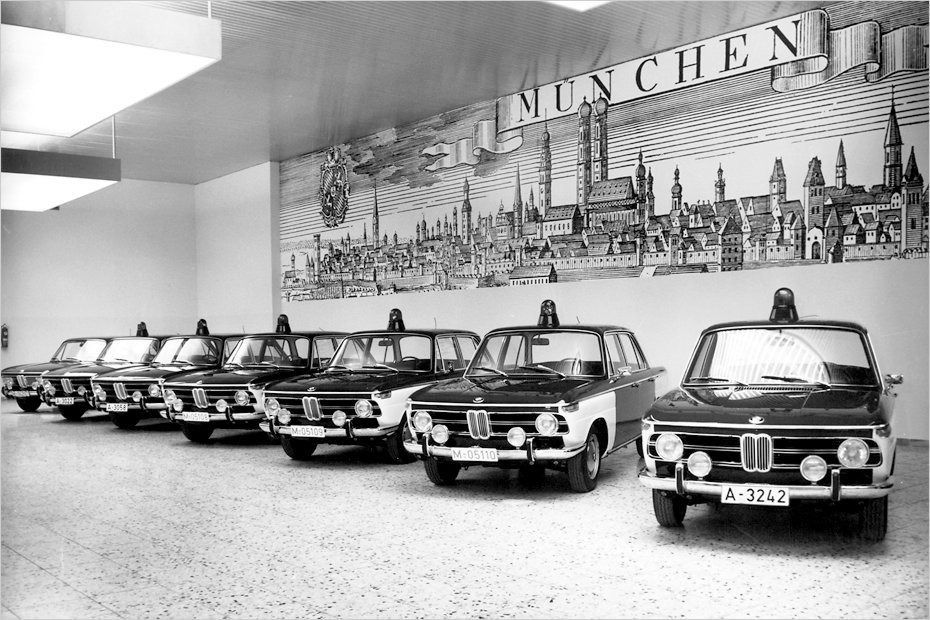

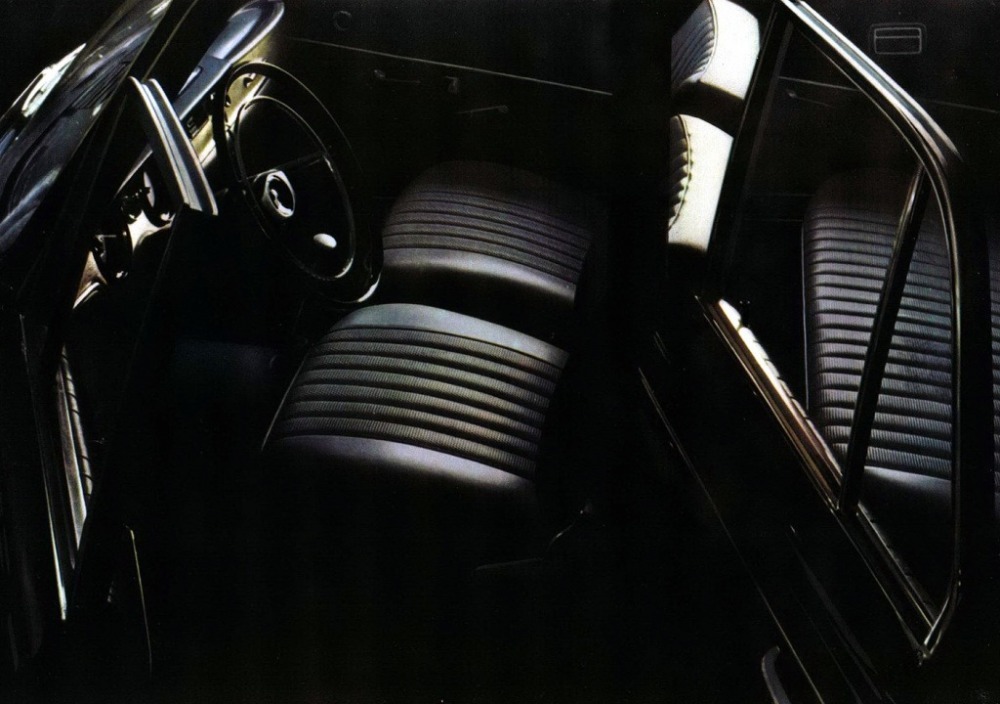
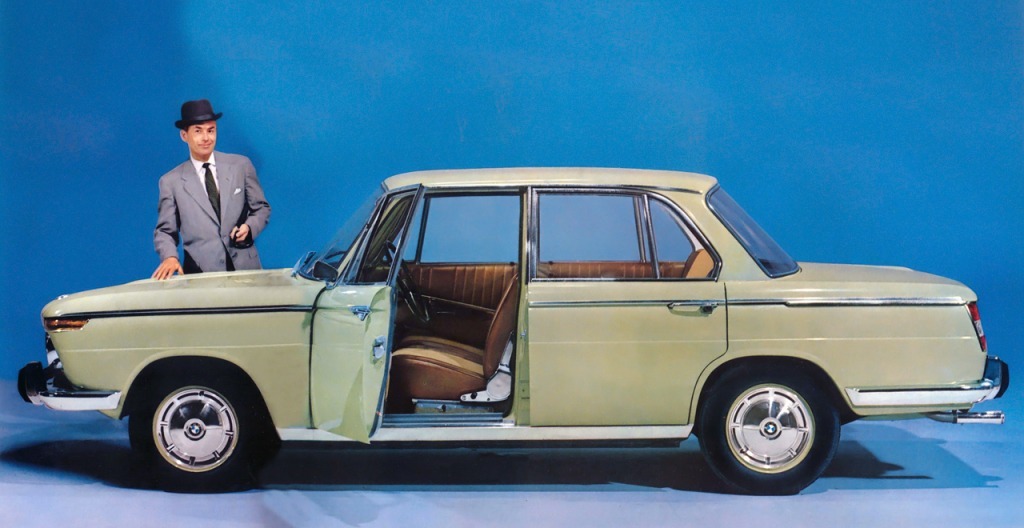 1 point
1 point -
To broaden the market for its car, In addition to BMW 2000 and BMW 2000ti, BMW rolled out the 2000 Ti Lux. It boasted wood interior trim, fully reclining front seats, a console/storage bin on the transmission tunnel, a fully carpeted trunk, and suspension modified for greater ride comfort. Badges fore and aft announced the Ti Lux. With Ti Lux, BMW introduced rectangular headlights to Neue Klasse cars. A total of 17,440 2000 Ti Luxes were built between 1966 and 1972, when only 94 were built to complete the model.1 point
-
In 1966, for those who wanted a bit more performance out of a BMW 2000, for a cool 12,750 DM, you could get a BMW 2000ti that sported twin Solex Carburetors, 120 bhp, and a top speed of 112 mph. ATE-brand servo-assisted disc brakes in front with drums in back again. The car's overall dimensions were the same as previous NK's, but it weighed slightly more, at 1,150 kg. This was the NK model that Herbert Hahne piloted to lap records on the Nurburgring, averaging 137.2km/h (85.2 mph). In the U.K., the 2000ti was sold as a Frazer-Nash BMW. With its startling performance, some of the only cars on the market that came close were the Rover 2000, Triumph 2000, and Alfa Romeo Giulia. More than 6,400 were sold from 1966 through 1968.1 point
-
Upcoming Events
-


.jpg.fdcc2c0226c2206a0cbb92c612481c94.jpg)
















.jpg.4389e62f72094e41442b039d9aeb5221.jpg)






.jpeg.44cdc0f0b4a2d22755e8420d281ca5b4.jpeg)


























